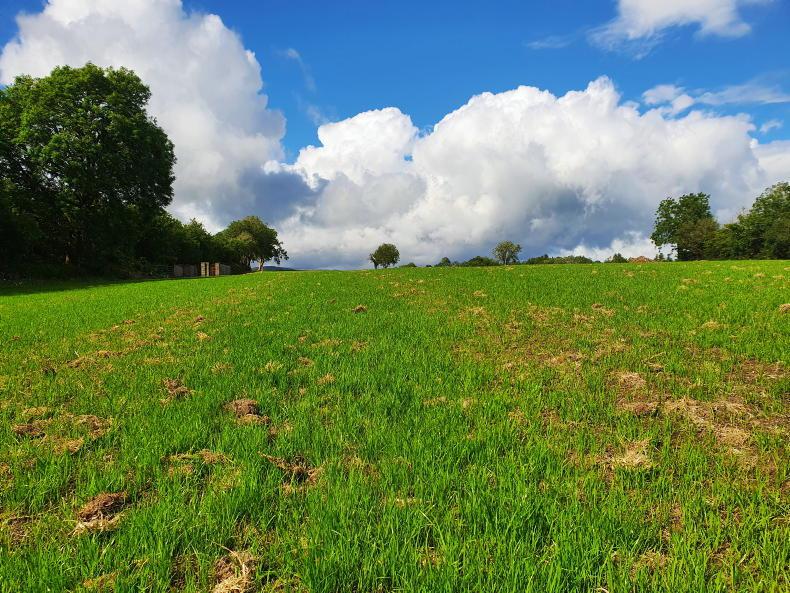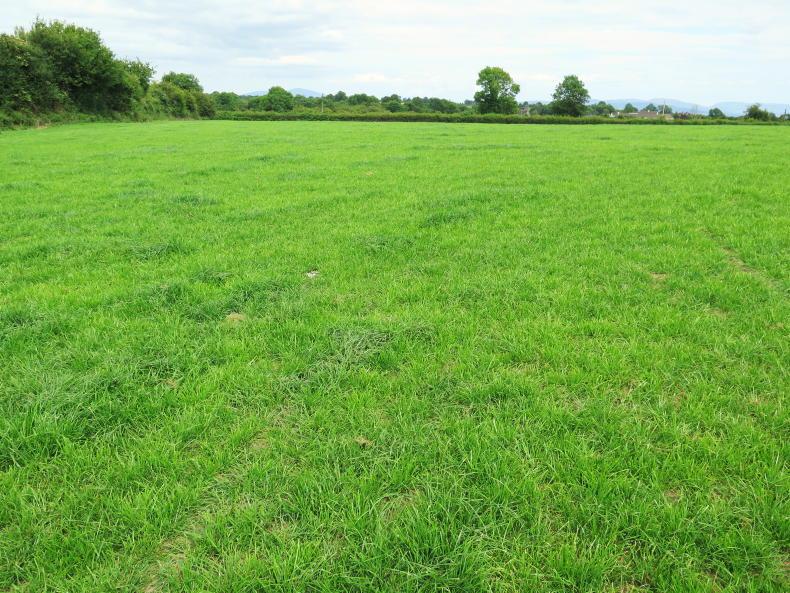For those who reseeded back in mid-April and early May, it is now six weeks-plus since the seed first went in.
It is important to walk the reseeded paddock regularly to assess it for weeds.
A good rule of thumb is when a dock leaf is the size of a two euro coin, it is ready to be sprayed.
A post-emergent spray is your best chance to get rid of any weeds present. If you included clover in your grass seed mix, you must use a clover-safe spray.
Nitrogen
If you have not already done so, spreading nitrogen (N) on reseeded ground at this stage will also benefit grass establishment.
Spread around 28 units of N per acre (30kg to 40kg N/ha) at the four- to six-week stage.
Grass seed has a very low requirement for N in the early stages of establishment. Applying high levels at seeding can promote weed growth and competition for the grass seed.

Aim to graze your reseed at a cover of around 800kg DM/ha to 1,000kg DM/ha.
Grazing at this early stage will encourage the plant to tiller and should be done so for the first two to three grazings.
Pull-test
Carry out a pull-test before you let stock in; simply pull the grass and if the roots don’t pull up, it's ready to be grazed.
Avoid cutting reseeded ground for silage where possible.
This week during a number of our farm walks with the grassland management courses, we walked reseeded paddocks.
Each of the host farmers pointed out they will graze the paddock at around 1,000kg DM/ha with the cows.
In the past, many would have grazed a reseed with calves or lighter stock.
The reason for grazing a reseed with cows is they get through it faster.
With young stock, they often start grazing at a cover of 1,000kg DM/ha, but by the time they get to the end of the paddock the grass is gone far too strong.






 This is a subscriber-only article
This is a subscriber-only article











SHARING OPTIONS: